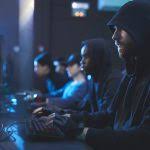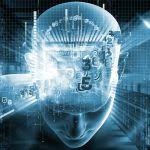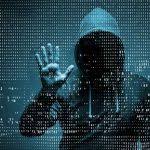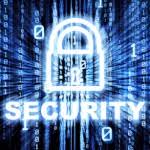How the Apple II Invented Modern Hacking.
Then came the Apple II it wasn’t just a machine; it was the Trojan Horse that smuggled computing into the hands of the masses. In doing so, it didn’t just kickstart the technological revolution; it gave birth to modern hacking, defining the tension between digital freedom and control that we still grapple with today.
Before the Apple II: An Exclusive Hacking Club
To understand the Apple II’s impact, we must first look backward. Before 1977, “hacking” was an esoteric art. It involved leveraging institutional resources like the massive time-sharing systems at MIT or Stanford to improve existing programs, explore system limits, or perform subtle digital pranks. Hacking was largely benign and collaborative, performed by people already embedded within the system.
The Apple II, designed by Steve Wozniak, changed the physical landscape. It was affordable, relatively easy to program, and above all, it was private. For the first time, one didn’t need university credentials or a government clearance to explore the digital world. The key to the digital kingdom had been mass-produced and sold at retail.
The effect was instantaneous: the democratization of hardware led directly to the explosion of software piracy, phone system manipulation, and independent coding experiments.
The Wild West of Code: Software Pirates and Phreaks
The Apple II provided the platform, but its floppy disk drive, the legendary Disk II, provided the engine for the forthcoming chaos.
1. The Piracy Boom
In the early days of personal computing, the concept of software protection was weak or nonexistent. If you bought a game, you could insert a blank floppy disc and, with the right program, make a perfect copy. This wasn’t merely sharing; it was the foundation of an entire counter-culture.
The Apple II scene became dominated by “cracking groups” underground collectives dedicated to removing copy protection and distributing games and applications, often through early electronic bulletin boards (BBSs). Names like the 4 A.M. Crackers and the Redsand Crew became legendary in these digital spaces.
The ethos was simple: information wanted to be free. The reality was that teenagers now had the power to undermine the nascent software industry entirely.
2. The Legacy of the Phone Phreaks
The very DNA of Apple was steeped in early hacking. Long before the Apple II, Steve Jobs and Steve Wozniak were immersed in “phone phreaking” the art of manipulating telephone networks using frequencies to make free long-distance calls. Their product was the infamous “Blue Box.”
With the arrival of the Apple II and its ability to connect via modem, the creativity of the phone phreaks found a new, programmable home. Hackers used the Apple II to explore, map, and occasionally disrupt the massive, monopolistic phone network (AT&T). The Apple II became the ultimate tool for external penetration, allowing users to enter, roam, and control systems using only a modem and a bit of code.
The Hammer Falls on Hacking: Government Crackdown
As these activities moved from mischievous pranks to large-scale, coordinated theft and systemic disruption, the reaction was inevitable. The early 1980s marked the end of the hacker innocence.
The software industry, reeling from millions in losses due to piracy, began aggressively lobbying the government. Simultaneously, breaches that moved beyond mere curiosity such as intrusions into bank systems or federal databases became public.
This perfect storm triggered a massive federal response:
- New Legislation: Governments realized their laws were obsolete. Acts like the Computer Fraud and Abuse Act in the U.S. began to criminalize unauthorized access, officially turning many activities previously classified as pranks into felony crimes.
- The FBI Takes Notice: Law enforcement agencies, initially baffled by “computer crimes,” began investing in specialized units. The focus shifted from the playful exploration of systems to the prosecution of malicious intent.
- The Rise of DRM: Software companies, driven by fear and necessity, invested heavily in more sophisticated, often complex, forms of digital rights management (DRM) to protect their code from the legions of Apple II pirates.
The result was a dramatic shift: the open, easily accessible architecture that made the Apple II revolutionary was increasingly viewed by the establishment as a security liability that needed to be contained.
From Chaos to Control: The Apple App Store Connection
On the surface, there is no greater contrast than the freewheeling, often illegal, Apple II BBS scene and the highly controlled, proprietary ecosystem of the modern Apple App Store. Yet, the current billion-dollar platform is the direct, polished evolution of the very demands the Apple II hacker culture first voiced.
What did the early Apple II hacker want?
- Frictionless Access: They wanted to find, download, and execute software quickly and easily.
- Diverse Tools: They wanted a massive library of programs and utilities generated by a large community.
- Direct Distribution: They wanted a way to share their creations without relying on traditional, slow retail channels.
The early BBSs and piracy networks were crude, anarchic attempts to fulfill these desires. They provided immediate, decentralized distribution, bypassing the gatekeepers.
The App Store, launched three decades later, is the ultimate fulfillment of that desire for frictionless distribution but under the ironclad control of the original manufacturer.
The App Store takes the scattered, unpredictable distribution methods of the 1980s and centralizes them:
- Verified Security: It addresses the security and piracy issues that terrified the industry in the 80s.
- Massive Library: It provides the vast, easily searchable software library that the BBS community dreamed of.
- Payment Mechanism: It monetizes the act of distribution that the early hackers sought to make free, creating an entirely new economic model.
In essence, the modern App Store is the sophisticated, regulated answer to the chaotic question first posed by the Apple II: How do we rapidly distribute software created by a decentralized community?
The Apple II didn’t just democratize hardware; it democratized curiosity. It taught a generation that computers were not just tools for institutional power but keys to a world of endless exploration. While the methods of those early explorers led to crackdowns and regulation, their core DNA the demand for accessible tools, open platforms, and simplified software distribution is what ultimately powers the multi-trillion-dollar digital economy Apple built upon its foundation.






